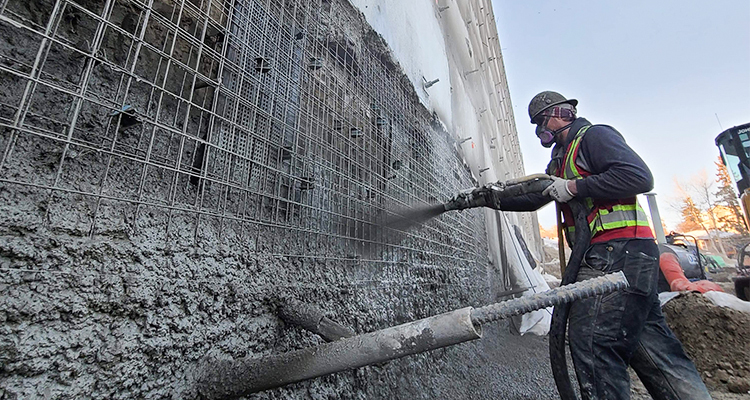Project managers use different methods to test the strength of concrete, but it is important that the project managers keep in mind the impact these techniques will have on the concrete.
Concrete is an important part of construction projects; hence concrete contractors need to test their strength before using them. There are many methods that contractors use to measure the strength of concrete.
Some of these testing techniques can be done directly onsite, while some require some time for third-party facilities to deliver strength data.
Apart from time, there are other factors that also impact the decision of the concrete contractor. Such as the accuracy of the testing process is just as important because it directly impacts the quality of the concrete structure.
Over the years, the curing process of concrete has seen many developments. Now the professional concrete contractor uses additives, heating blankets, and vapor retarders to cure the testing area.
Using shotcrete has many economic and sustainable advantages; therefore, many contractors now use shotcrete in their construction projects.
There are many different methods that project managers and concrete contractors use to measure the strength of concrete.
In this article, we will talk about four techniques that are used to measure the strength of concrete.
Also Read: 6 Common Myths About Shotcrete
Rebound Hammer
Rebound hammer is one of the oldest methods used for testing the strength of concrete. It has been around since the late 1940s; it was developed by Swiss engineer Ernst Schmidt. It is also known as Schmidt Hammer.
This method uses a spring mechanism to activate a hammer that impacts a plunger that drives into the surface of the concrete. The rebound distance between the hammer and the surface of the concrete usually has a value between 10 to 100. This value is then used to find the strength of the concrete.
This method is relatively easy to use, and hence many concrete contractors use this method for testing the strength of their concrete.
The only drawback is that in order to use this method, the project manager will need to use pre-calibration of cored samples to get accurate measurements.
Also, the test results can be skewed due to the surface condition or presence of large aggregates or rebar below the testing location.
But the rebound hammer method is widely used by concrete contractors because it is one of the oldest and easiest ways of measuring concrete’s strength.
Penetration Resistance Test
This test is commercially known as the Windsor probe test. This method measures the strength of the concrete by the depth of penetration of a metal rod that is driven into the concrete by a sudden explosion.
In order to perform a penetration resistance test, the project manager uses a device that injects a small probe or pin into the testing surface of the concrete.
The force with which the probe or pin penetrates the surface and the depth of the hole is then correlated to measure the strength of the concrete.
This method is widely used by concrete contractors as it is easy to use and can be performed onsite.
However, the data is significantly affected by the surface condition and the type of form and aggregates used during the method. And it also requires pre-calibration of multiple concrete samples in order to ensure accurate strength results.
Ultrasonic Pulse Velocity
The ultrasonic pulse velocity is used to determine the quality and integrity of the structural concrete.
It uses a slab to determine the velocity of the pulses of the vibrational energy. The ease at which this energy makes its way through the slab aids in measuring the concrete elasticity, resistance to stress, and density. All of this data is then gathered to find out the concrete’s slab strength.
Since the ultrasonic pulse velocity technique is a non-destructive method, it is widely used by concrete contractors to detect cracks and honeycombing in the concrete slab.
However, this technique is highly influenced by the presence of aggregates, moisture, and reinforcements in the concrete element. And it also needs calibration of multiple samples for accurate testing results.
Pullout Test
In this test, the strength of a particular specimen is measured through the use of dedicated tension jacks. The basic principle behind the pullout test is to pull the concrete using a metal rod that is cast in place or post-installed in the concrete.
Then the combination of both the force required to pull the concrete and the time taken are correlated to determine the compressive strength of the concrete.
???????
The biggest advantage of the pullout test is that it can be performed on both new and old concrete and is easy to perform.
But the cons of the pullout test is that it involves a lot of damaging and crushing of the concrete. And the concrete contractors need a large number of test samples at different locations to get accurate results.





